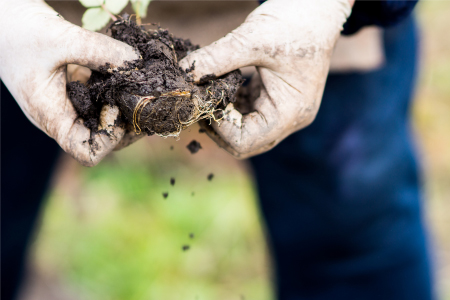Improving Seed Germination
Farmers struggle to get their crops and seeds planted to germinate quickly. When seeds are dormant, they wait for just the right conditions before germinating. Often environmental stresses like not enough moisture (drought) or lack of oxygen make seeds wait until conditions improve. Seeds have built-in mechanism that prevents them from germinating too soon. This cautious seed germination approach also tends to hurt plant yields, because plants gets off to a late start.
Dr. Brad Binder, University of Tennessee has been working with various plant seeds and the plant hormone ethylene to study seed germination. Ethylene increases seed germination, increases leaf growth, and root growth early in a plant’s life. When applied later in the growing season, ethylene causes plants to mature quicker (senescence) or die off and it promotes fruit ripening. Dr. Binder exposed tomato, cucumber, and wheat seeds to ethylene in the dark just like when seeds are planted and found that when the seeds started growing and were exposed to sunlight, the plants where taller, had larger leaves, more robust roots, and grew much better. A small quick dose of ethylene in the dark stimulated plant seeds to germinate and grow faster!
In plant seeds, abscisic acid (ABA) is called the stress hormone which helps plants survive certain stresses (too dry, too hot, lack of oxygen, to much salt). ABA helps plants survive but the result is lower yield. Ethylene is another plant hormone but it turns off the ABA switch. Dr. Binder found that small doses of ethylene not only improved plant growth and yields it also allowed the plant to grow faster, and survive the environmental stresses better. The simplest answer is that plants with a more developed roots and larger leaves can tolerate more stress. For farmers, they may soon be buying crop seed that has been treated with brief doses of ethylene before planting to stimulate faster germination. It will be the farmers job to make sure they plant at the proper time so the seeds can survive what ever conditions exist.
On another note, its January and it started to snow. While snow is pretty to look at, it also has some agricultural advantages. A little snow is a great insulator for wheat, strawberries, perennial crops, and cover crops. It keeps the wind from desiccating or drying out the crowns of plants. It also keeps the ground a little warmer for the roots to survive while adding some moisture.
An old rule of thumb was that every 10-12 inches of snow held about 1 inch of water. However, that old rule may be wrong. The moisture content in 10-12 inches of snow may vary from as little as .1 inch up to 4 inches of water. Snow flake structure, wind, temperature and many other factors affect how much water is in the snow.
Snow and rain also contains nutrients. East of the Mississippi, rain and snow can add 2 to 12# of nitrogen (N) and 6 to 10# of sulfur (S) to soil per year. Due to the Clean Air Act, farmers use to get 20-30# S free, so that number is much lower now. Precipitation also contains potassium, magnesium, calcium, and sodium; but the rates are fairly low and only benefit crops slightly.
N comes in two forms, nitrous oxide (NO) and ammonium N (AN). In the NO, about 5-10% comes from lightning and about 90-95% are manmade sources of NO derived from motor vehicles, power plants, and industrial sources. For AN, about 20% comes from soil microbes while the rest comes from manure and fertilizer. The AN sources can make up 25-75% of the total N in precipitation like snow and rain. Most of the N comes from human activity, so farmers living in the East around bigger cities and larger industrial areas get larger amounts of free N. (Source Minnesota Extension).
Snow also has some negative effects on the land. Often pests like voles (field mice), slugs, and some insects can benefit from the snow by insulating them against cold temperatures and desiccating winds. Voles do not hibernation and they can use the snow to hide from predators and to provide them shelter. Deep snow prevents the frost from getting deeper into the ground, so slugs and insect pests can survive better. Most slugs and insects burrow down below the frost line. When cold temperatures and the frost line pushes them deeper, they may reach the water line, get caught, and many perish. A good hard freeze like Ohio experienced last year around Christmas helped reduce many agricultural pests. With a warmer winter expected this year, expect more pests (voles, slugs, and insect pests) to survive.
